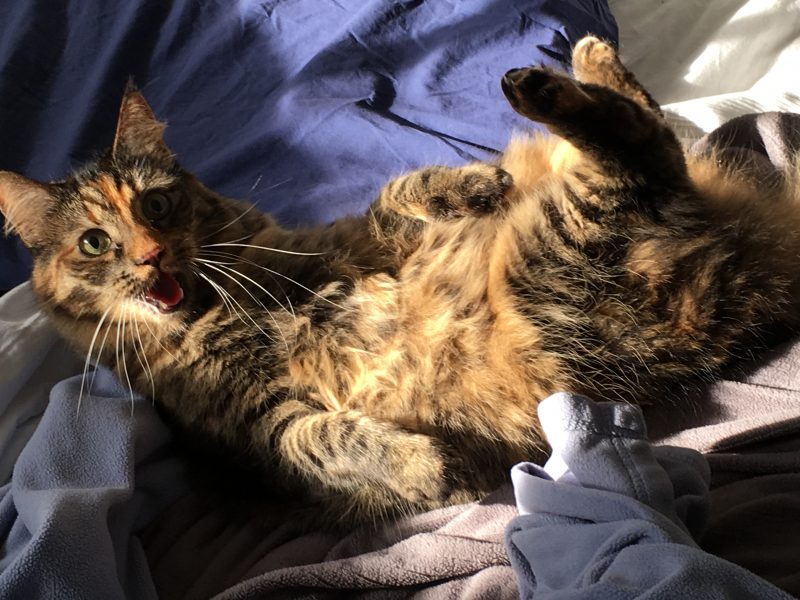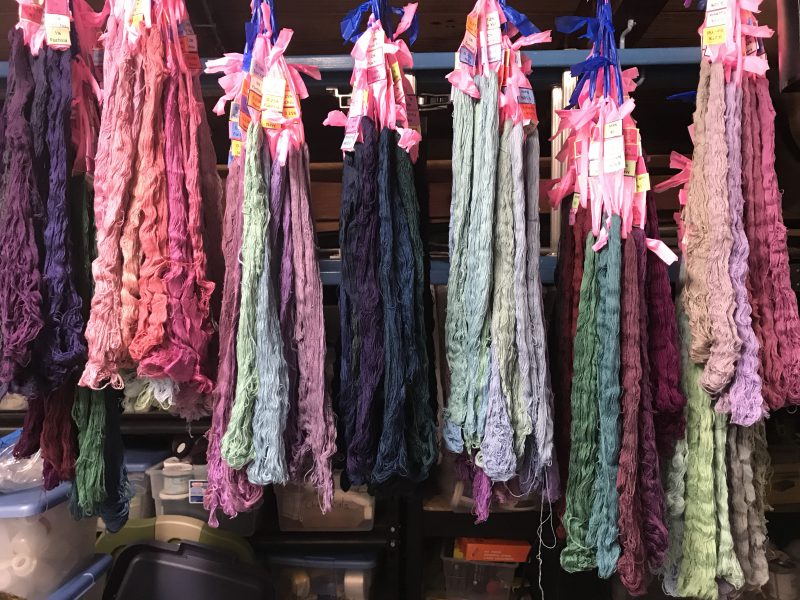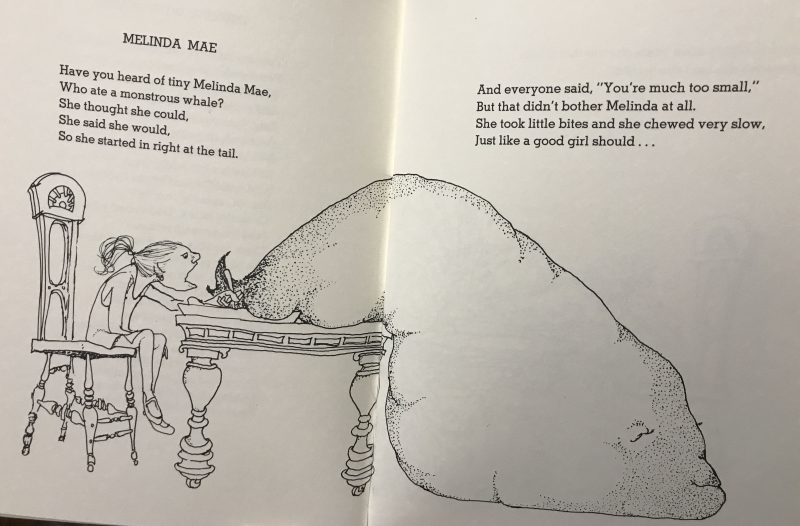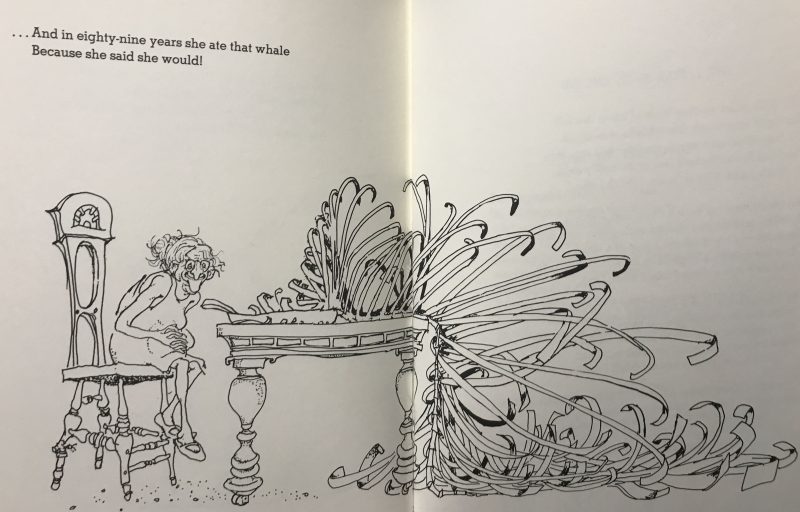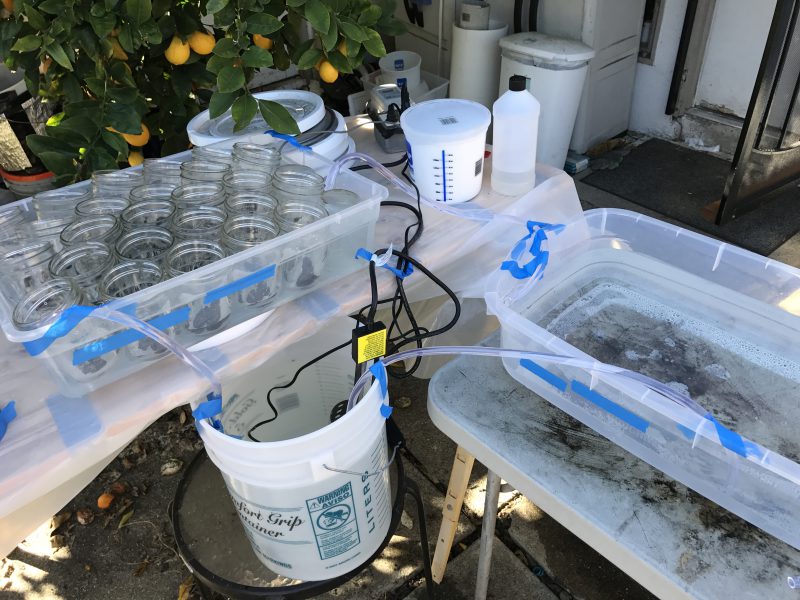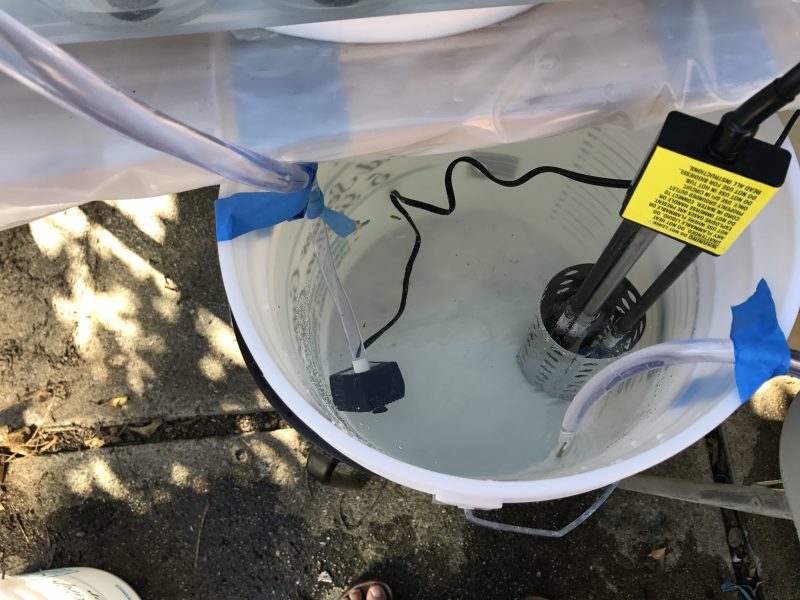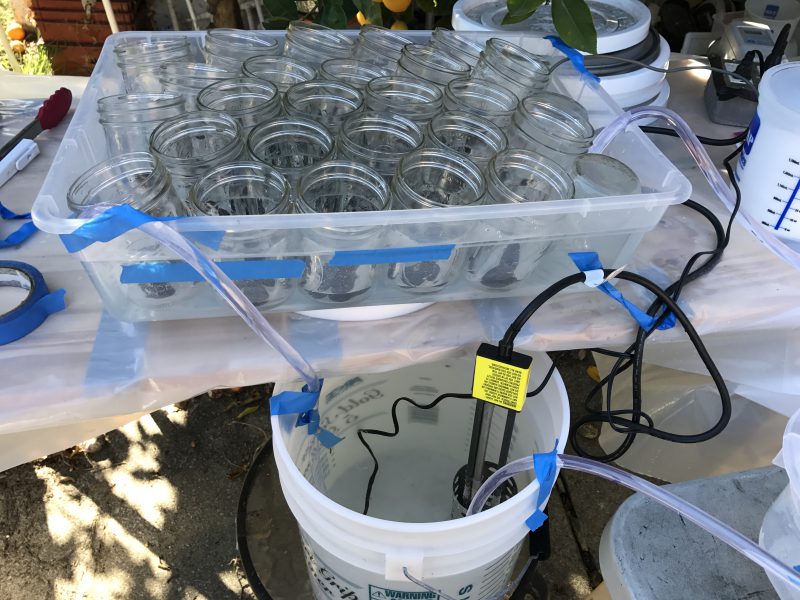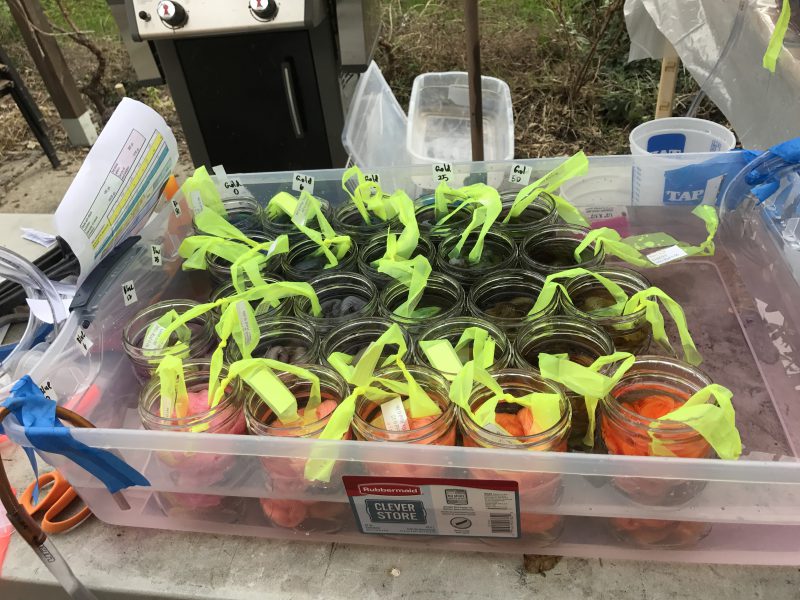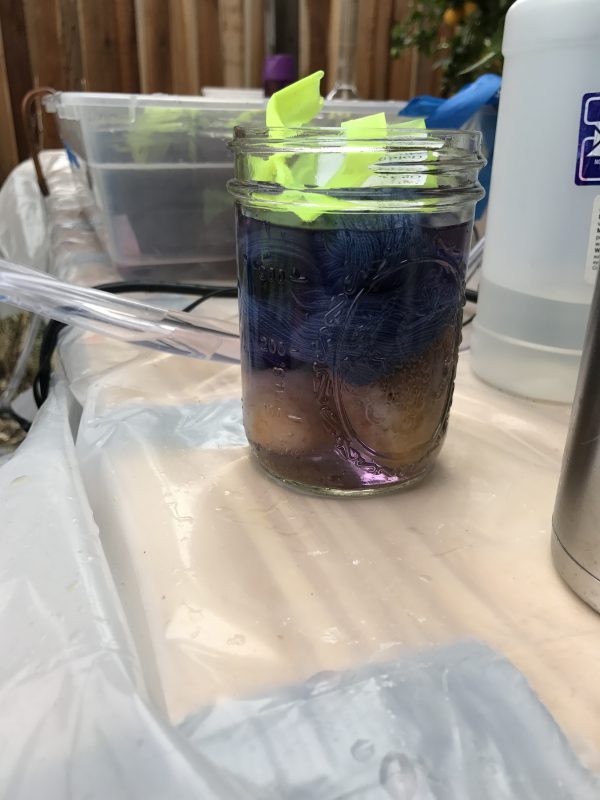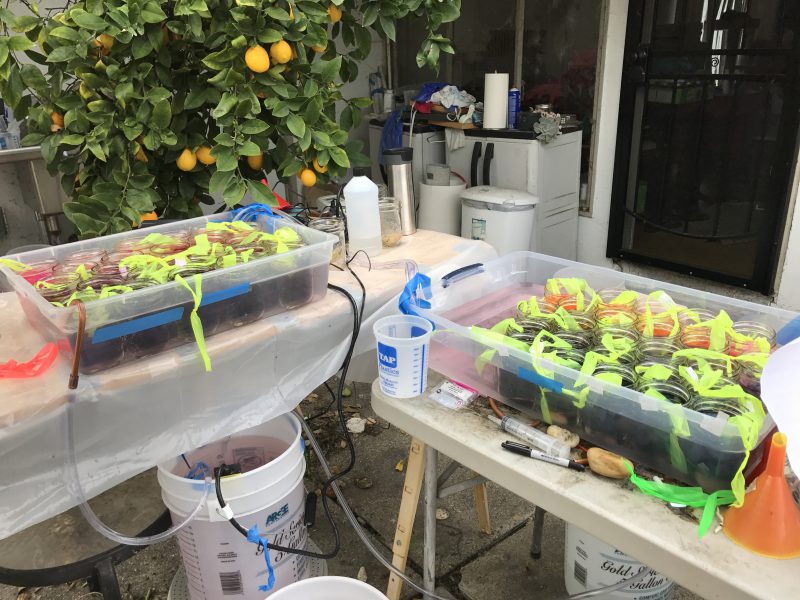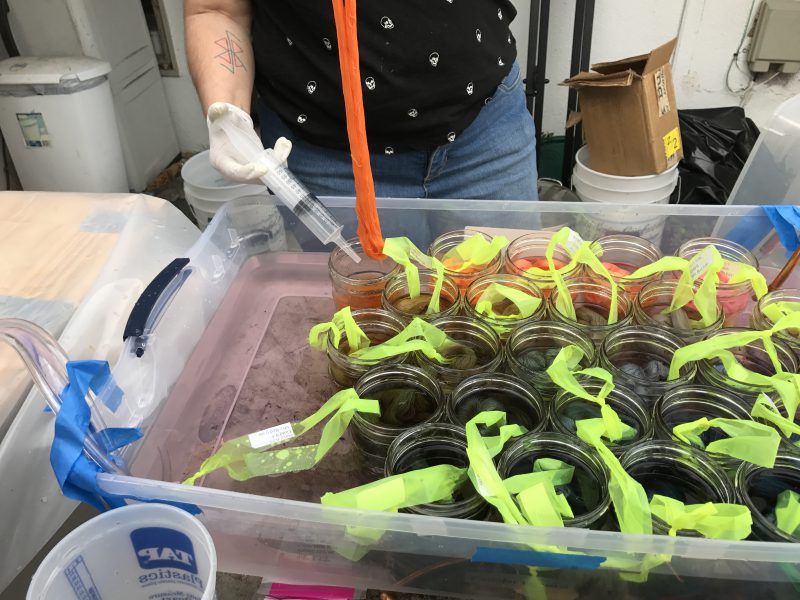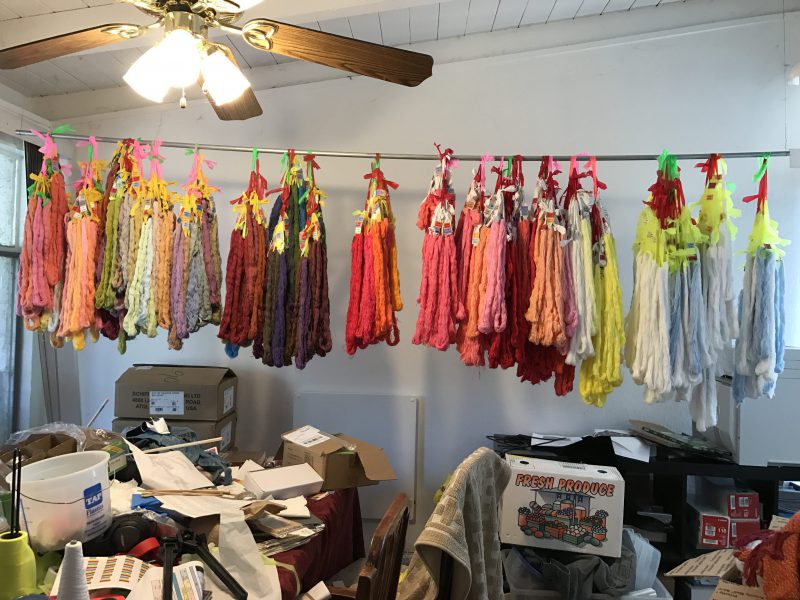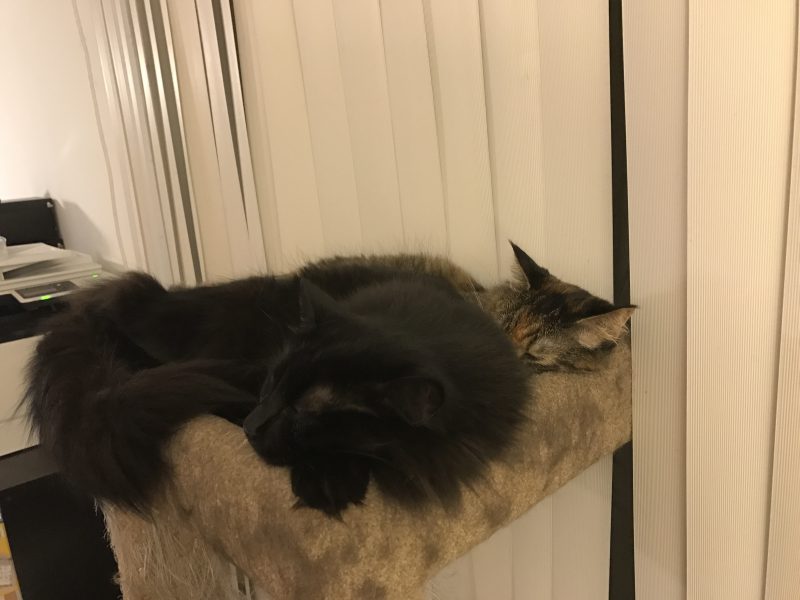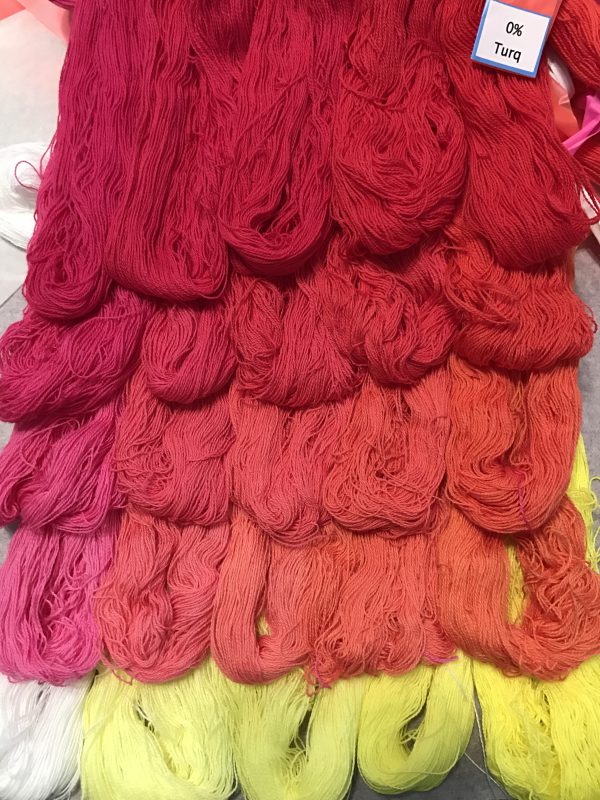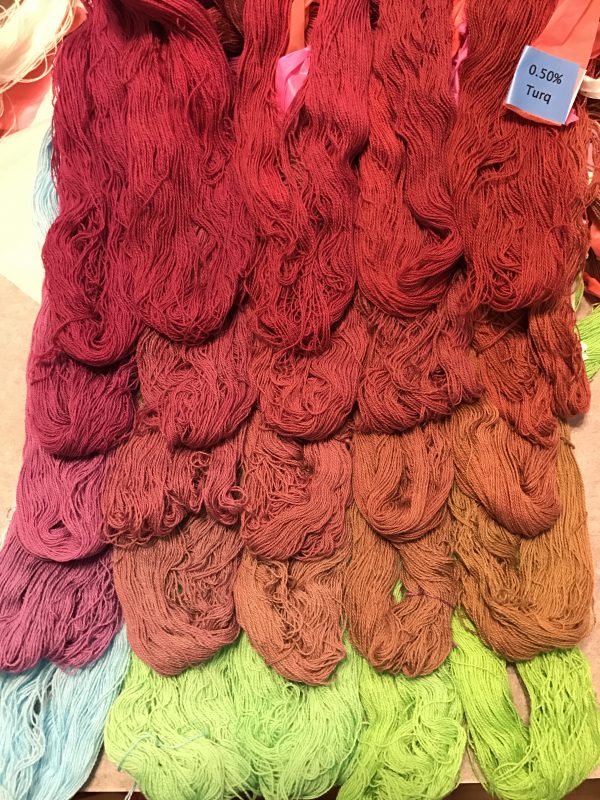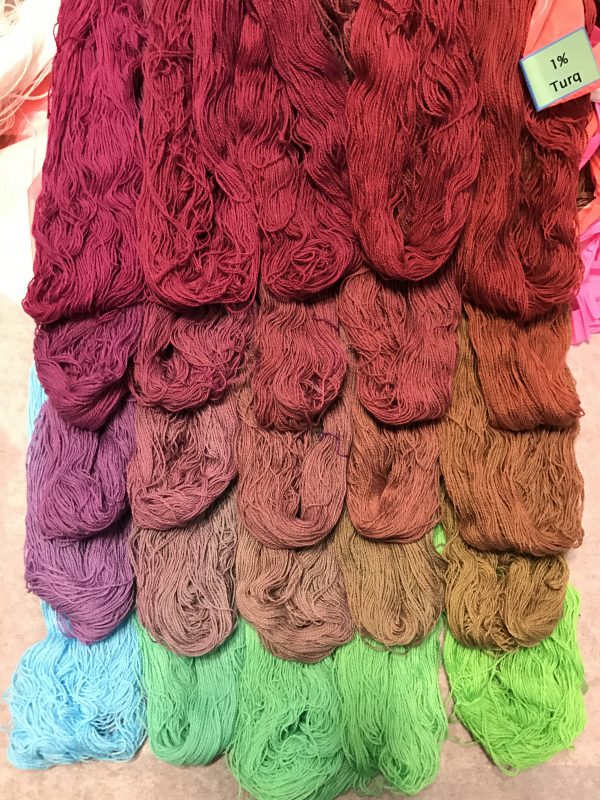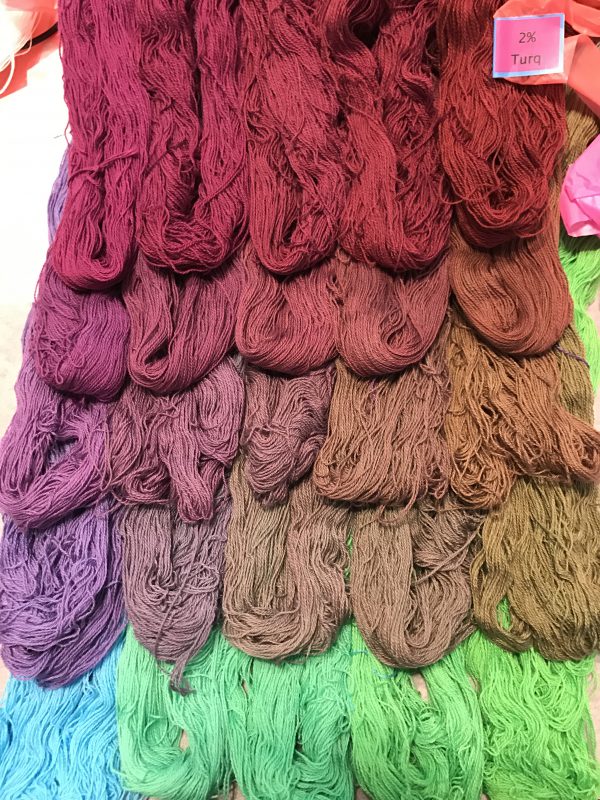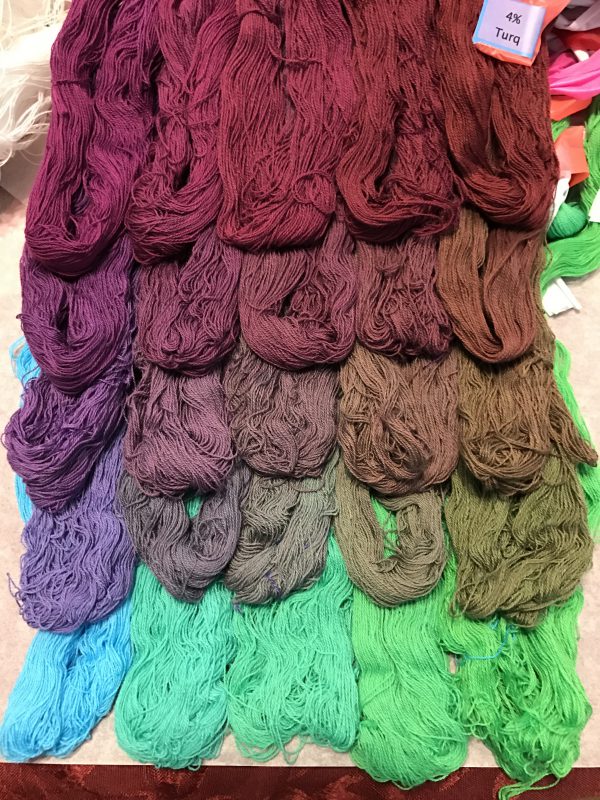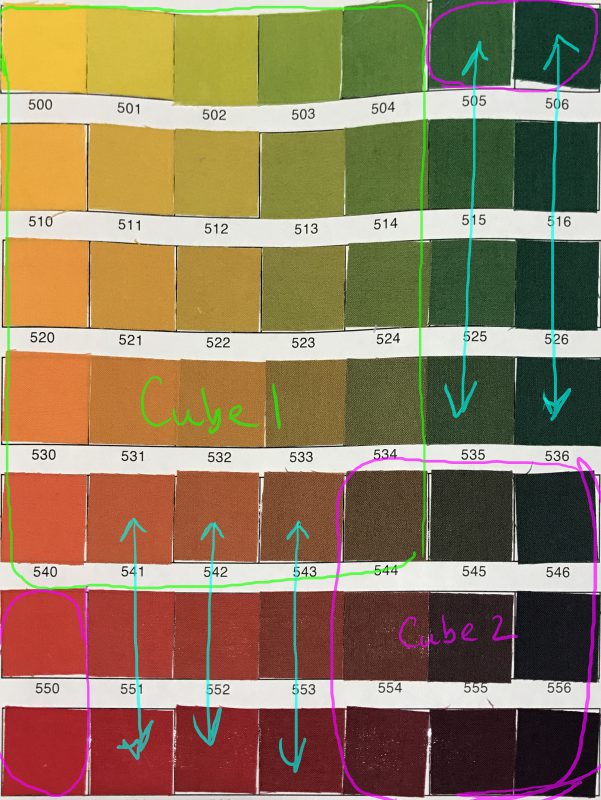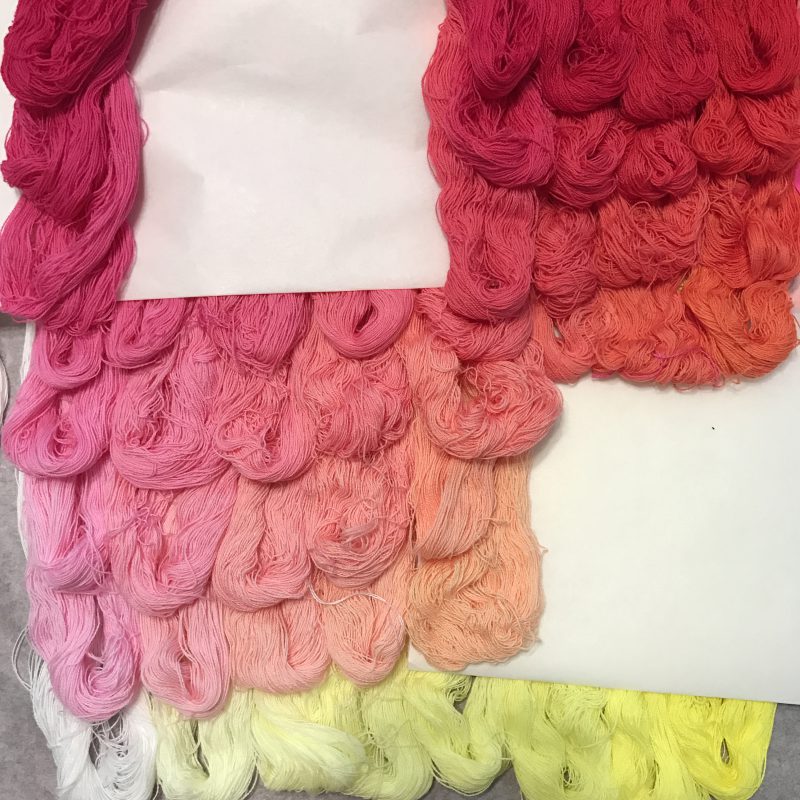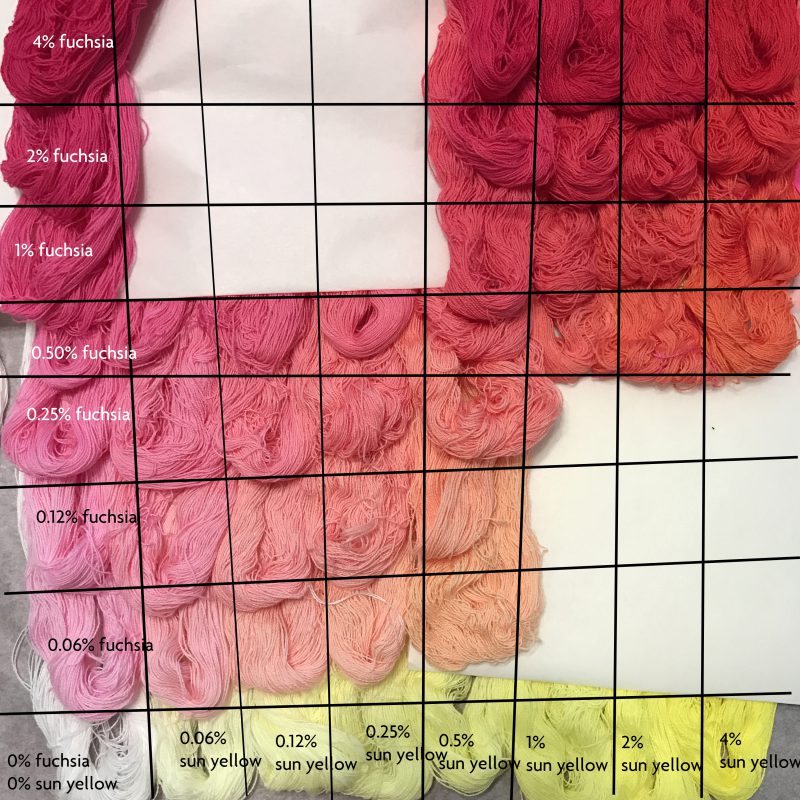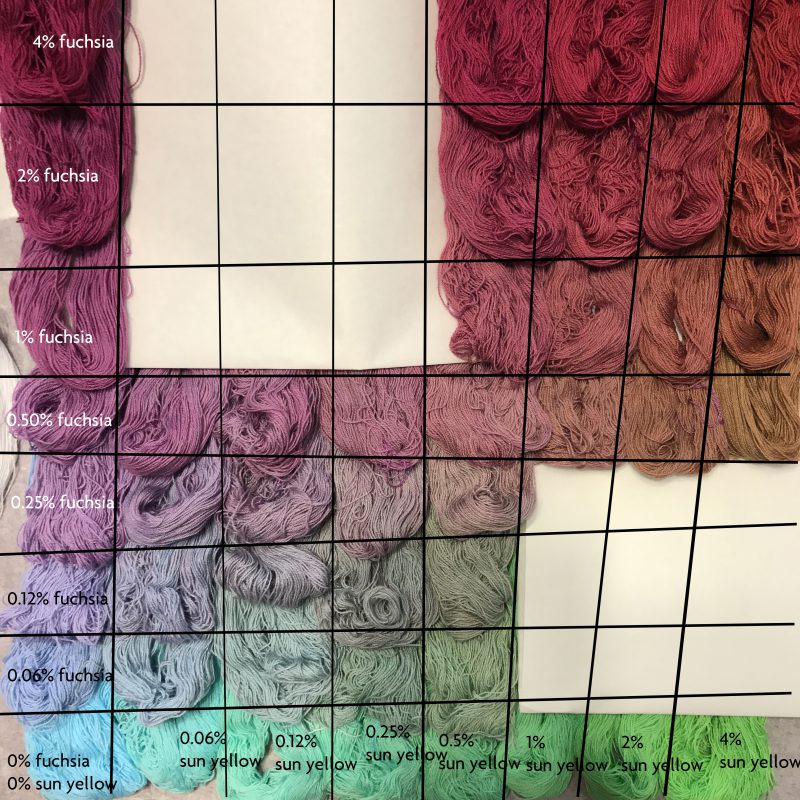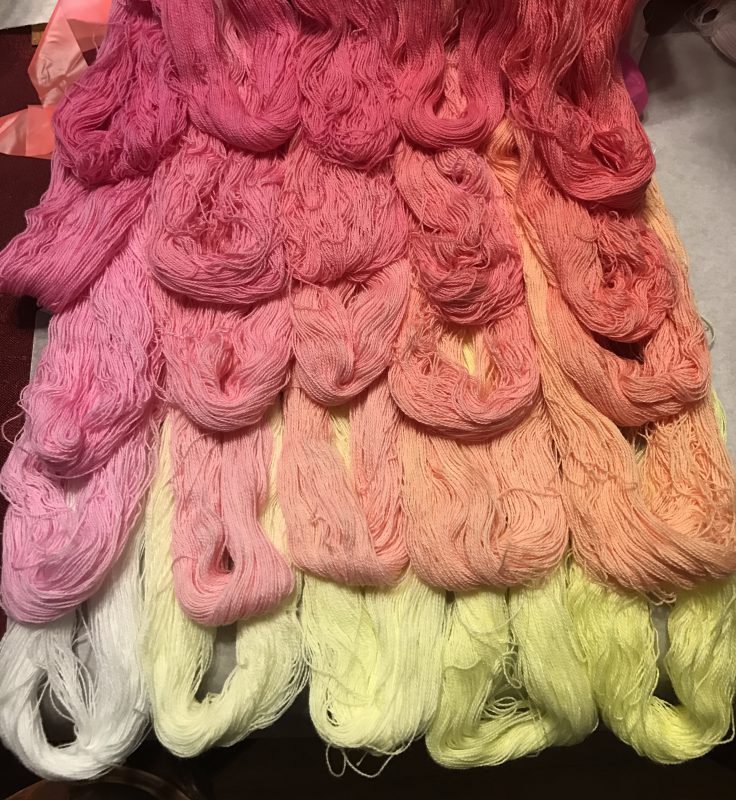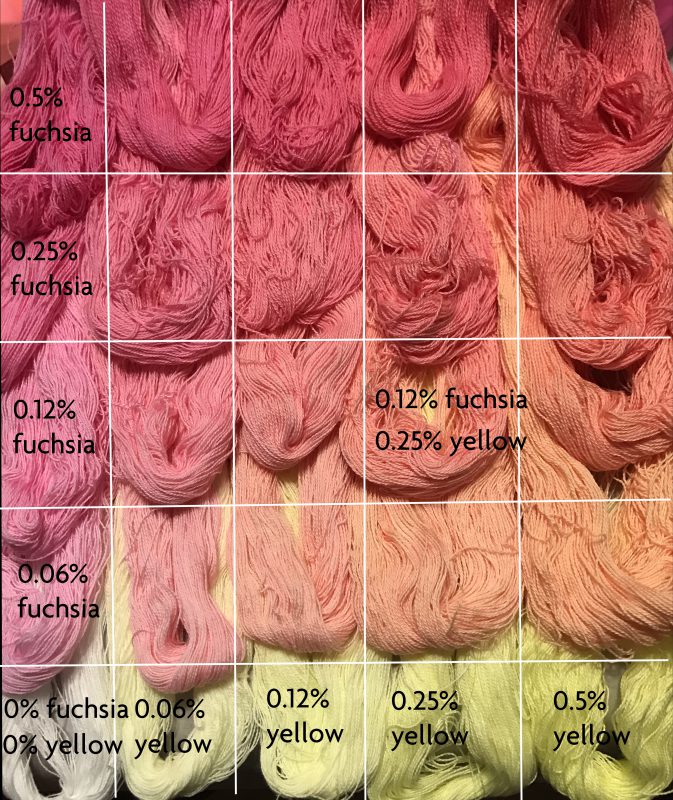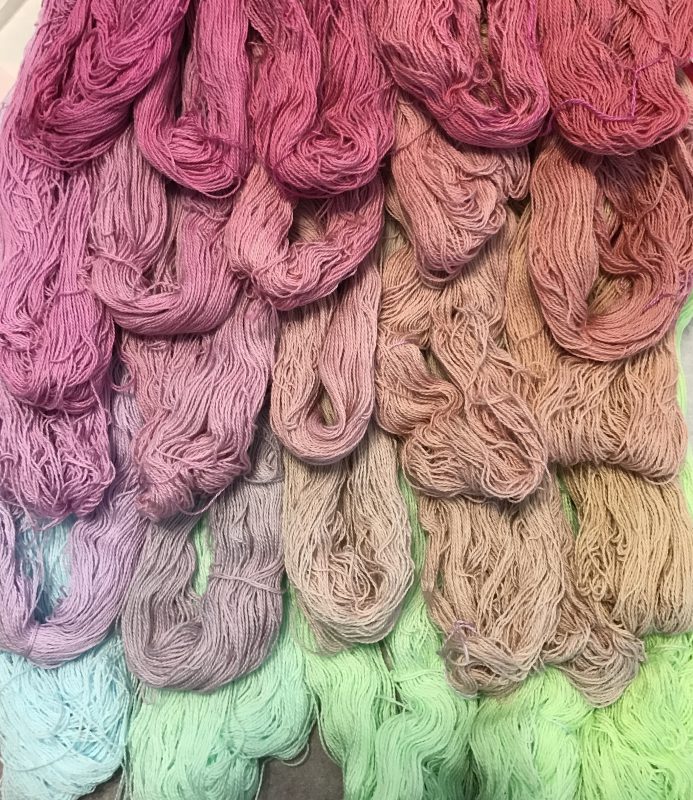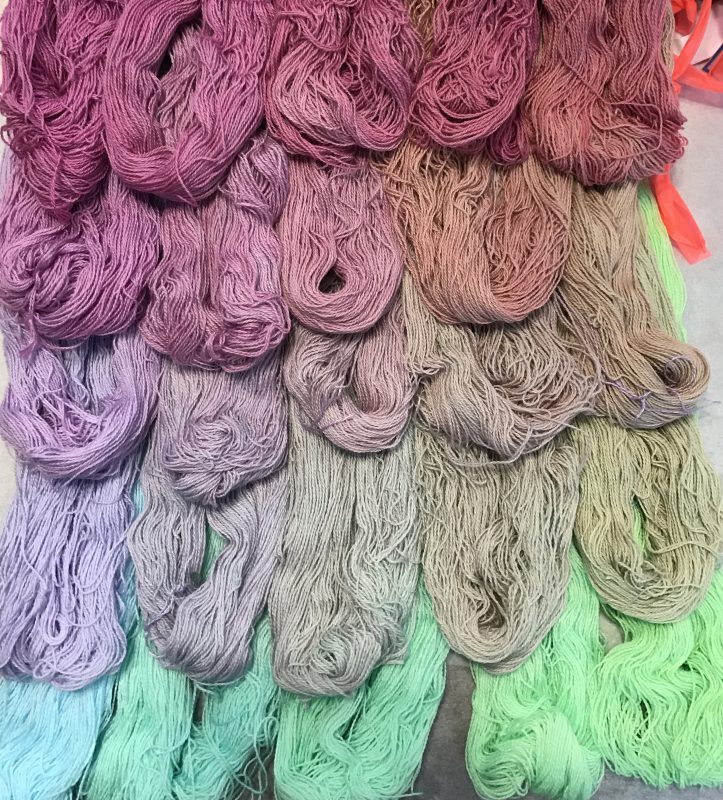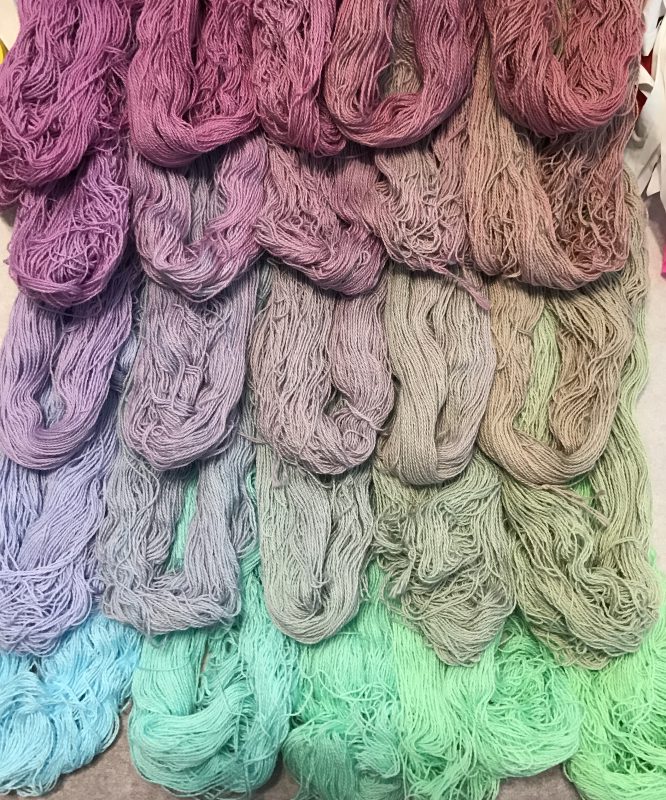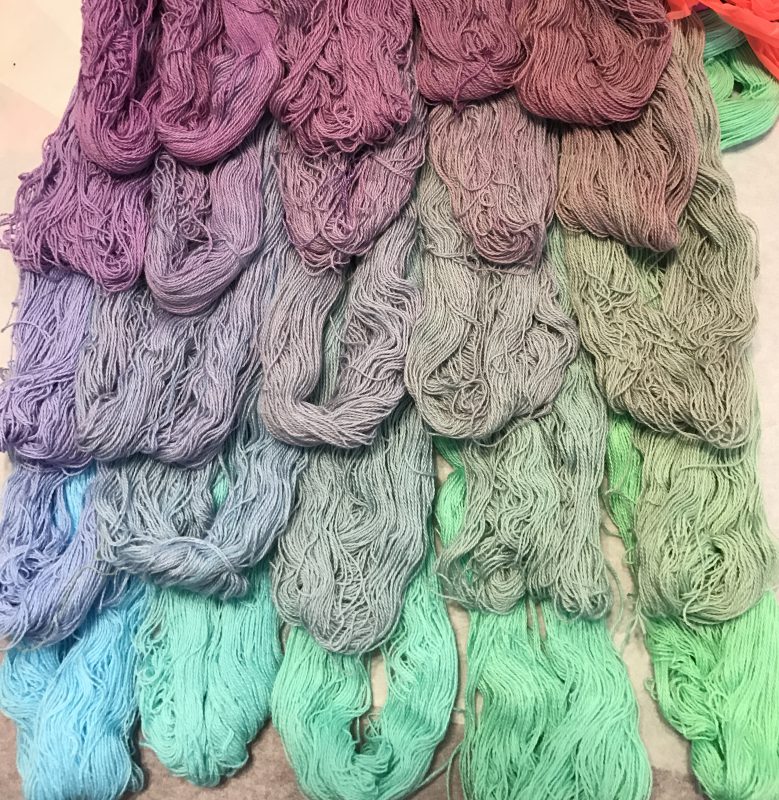After picking up the wound sample cards (and visiting my relatives) in Maryland, Mike and I flew to Chicago to visit his family. It was cold in Chicago. -6F, with a wind chill of -22F.
Now, I’ve lived in California for the past 30 years, so I can confidently tell you that there is no such thing as a negative temperature. I have no idea what temperature it actually is when they stick a minus sign in front of the number, but it can’t possibly be real. It’s probably more like the temperature of outer space, which I estimate to be somewhere around 15F (well beyond the point where your avocado and lemon trees die, and also the coldest temperature ever recorded in my hometown). So I spent pretty much the entire time indoors, looking at the thermometer in disbelief. If the gods had intended people to live in places that cold, they would never have created California.
While trapped inside by our sudden transportation into the interstellar void, I decided to try photographing my samples. I already knew that the standard iPhone camera app would be insufficient, so I had gotten the ProCamera app for my iPhone, and used it to adjust the white balance of the image. Then I shot photos of all the samples. Here’s an example photo:
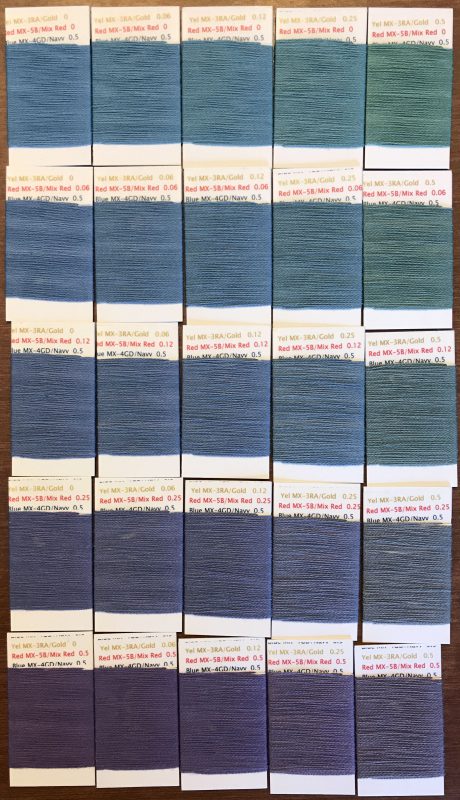
Then I checked it on my laptop monitor, which I had color calibrated using equipment borrowed from a professional photographer friend (Joe Decker, who shoots unbelievably beautiful Arctic landscapes). Alas, the app had not captured the colors correctly.
This started a long chain of progressively more desperate attempts to get color-accurate photos of the samples. Even assistance from a trained professional didn’t help:
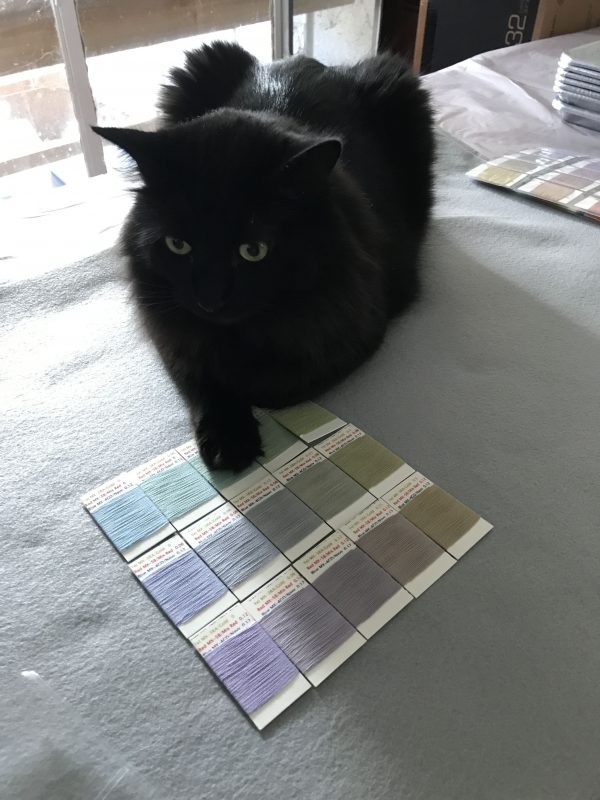
Here’s a composite photo showing some of my attempts. Unbelievably, all these photos are of the same two sample cards – just with different apps, color correction, and lighting. (They are all shot with my iPhone 7, but that wasn’t the problem – I tested it against the camera of a semipro photographer friend, and – surprisingly – the iPhone rendered pretty much the same colors as his much more expensive camera.)
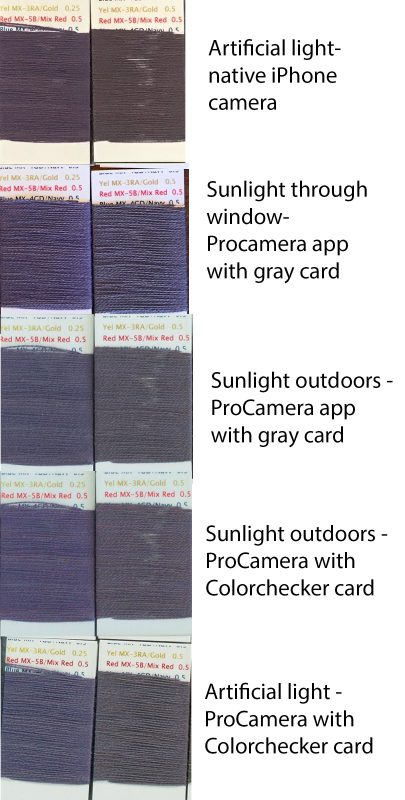
As you can see, the colors are similar, but not the same. And when I tell you that none of these is exactly the same color as the real-life sample cards (even under the same lighting), you will begin to understand the depths of my existential despair.
Well, at least I can take some comfort in the knowledge that my inability to capture the colors accurately is largely irrelevant – unless your monitor has been calibrated using professional-grade equipment, the colors you are seeing won’t be accurate anyway. (Monitors are notorious for distorting colors.)
I’m still planning to photograph and post the samples on my website, though. Even with shifted colors there’s a lot of information in the samples that will be helpful to other dyers. I hope to post the samples I have within the next month or two.
After returning from our 10-day holiday trip, I had 36 hours at home before flying out again to San Diego to give a program and a workshop for the San Diego Weavers Guild. Here’s a photo of me giving my talk about brainstorming:
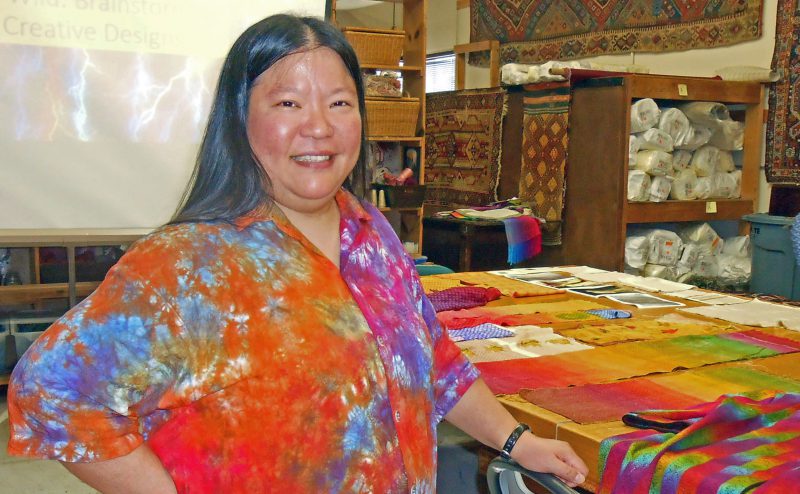
This was one of my last in-person workshops. I’ve decided that it makes more sense for me to focus on developing my online classes, so I’m no longer booking any in-person teaching. I will be giving one talk at Convergence (about critiquing your work) and will be teaching at ANWG 2019, but that’s basically it.
I had planned to stay in San Diego for a few extra days to visit some friends, but felt like I was coming down sick, so I decided to cut my trip short and fly home on Monday. This turned out to be an excellent decision, because I broke a tooth Monday morning at breakfast. Being an overachiever, I didn’t just crack it a little – I split it clean in half, right down to the root. I grabbed the next flight home; Mike picked me up at the airport and ferried me straight to the dentist. Who was quite impressed by the swath of destruction:
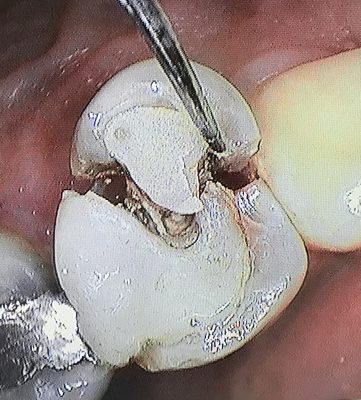
Since there was nothing left to save, the next step (two days later) was a hot date with an oral surgeon, which ended like this:
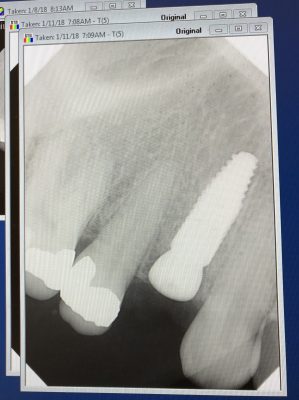
Now I have a titanium peg in my jaw. In another four months or so, after the titanium implant has bonded to the bone, I’ll get a crown on the implant and will finally look normal again.
Meanwhile, for those wondering about the puzzle, I finally started it! I decided to begin with this tray:
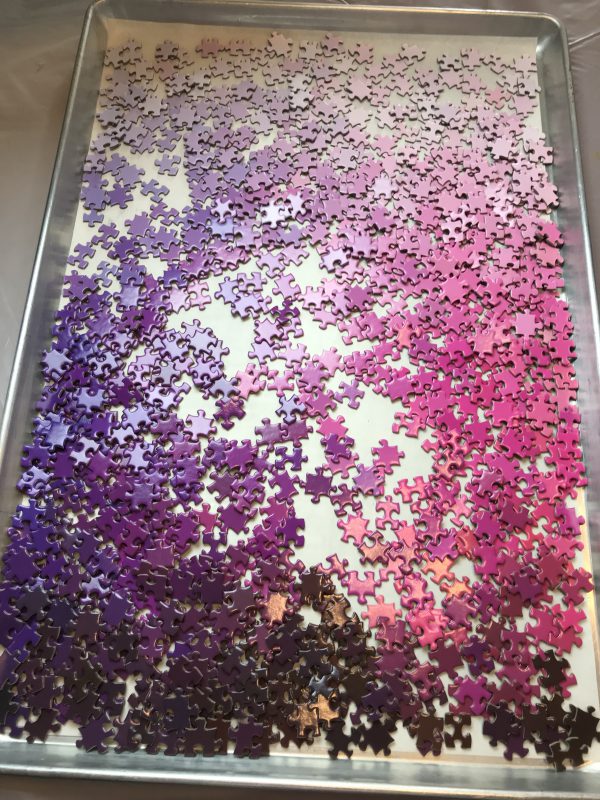
And after about 2.5 hours, here’s what I had assembled:
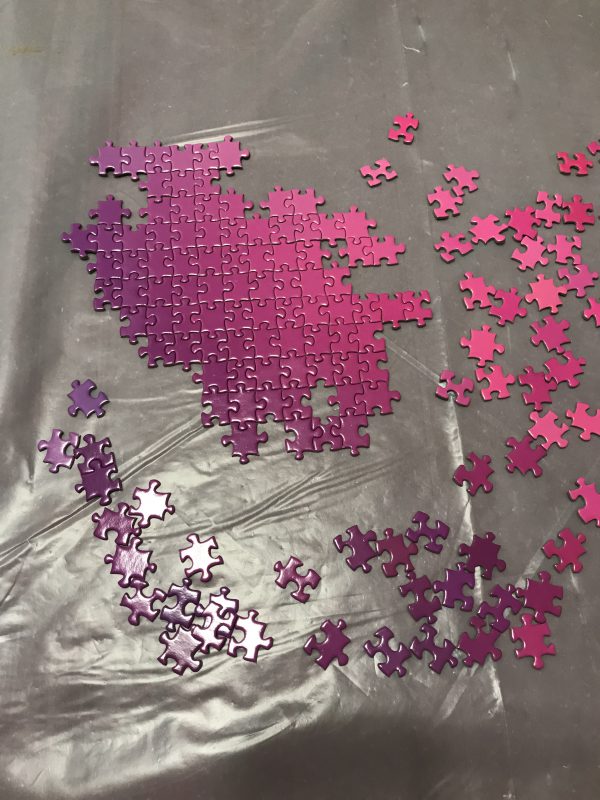
It’s proving quite difficult – partly because the pieces are so featureless, but also because the pieces are designed to be ambiguous about fit – so it’s not just finding the right color pieces, but also about making sure they actually fit. Usually I don’t find out about misplaced pieces until considerably later in the puzzle. It’s frustrating, because I prefer puzzles in which a piece that appears to fit actually does.
And so far, I think I’ve foiled the puzzle gods by covering up the puzzle when not in use. But of course it is a bad idea to underestimate the mighty powers and fiendish cleverness of the puzzle gods, so we’ll just have to wait and see.
I’m still not quite caught up to my present-day adventures, but this is getting long again, so I’ll end here. But I’ll leave you with one of the marvelous photos captured by our cat-sitter while we were away. Somehow she manages to get better photos of Tigress and Fritz in ten days than I do all year – and she sends us twenty or thirty photos every day we’re away, so we get to see our “kids” having fun with her. (It helps with the shakes – “cold turkey” cat withdrawal can be seriously dangerous.)
Anyway, here is the best one of the lot. I’m going to save it to blackmail Tigress with after she becomes rich and famous.
